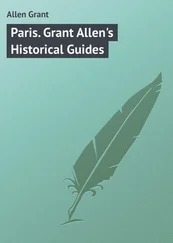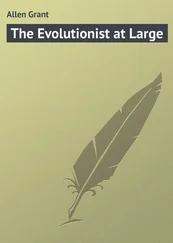Grant Allen - Science in Arcady
Здесь есть возможность читать онлайн «Grant Allen - Science in Arcady» — ознакомительный отрывок электронной книги совершенно бесплатно, а после прочтения отрывка купить полную версию. В некоторых случаях можно слушать аудио, скачать через торрент в формате fb2 и присутствует краткое содержание. Жанр: foreign_edu, История, на английском языке. Описание произведения, (предисловие) а так же отзывы посетителей доступны на портале библиотеки ЛибКат.
- Название:Science in Arcady
- Автор:
- Жанр:
- Год:неизвестен
- ISBN:нет данных
- Рейтинг книги:4 / 5. Голосов: 1
-
Избранное:Добавить в избранное
- Отзывы:
-
Ваша оценка:
- 80
- 1
- 2
- 3
- 4
- 5
Science in Arcady: краткое содержание, описание и аннотация
Предлагаем к чтению аннотацию, описание, краткое содержание или предисловие (зависит от того, что написал сам автор книги «Science in Arcady»). Если вы не нашли необходимую информацию о книге — напишите в комментариях, мы постараемся отыскать её.
Science in Arcady — читать онлайн ознакомительный отрывок
Ниже представлен текст книги, разбитый по страницам. Система сохранения места последней прочитанной страницы, позволяет с удобством читать онлайн бесплатно книгу «Science in Arcady», без необходимости каждый раз заново искать на чём Вы остановились. Поставьте закладку, и сможете в любой момент перейти на страницу, на которой закончили чтение.
Интервал:
Закладка:
Similarly with animals. Cut off a lizard's tail, and straightway a new tail grows in its place with surprising promptitude. Cut off a lobster's claw, and in a very few weeks that lobster is walking about airily on his native rocks, with two claws as usual. True, in these cases the tail and the claw don't bud out in turn into a new lizard or a new lobster. But that is a penalty the higher organisms have to pay for their extreme complexity. They have lost that plasticity, that freedom of growth, which characterizes the simpler and more primitive forms of life; in their case the power of producing fresh organisms entire from a single fragment, once diffused equally over the whole body, is now confined to certain specialized cells which, in their developed form, we know as seeds or eggs. Yet, even among animals, at a low stage of development, this original power of reproducing the whole from a single part remains inherent in the organism; for you may chop up a fresh-water hydra into a hundred little bits, and every bit will be capable of growing afresh into a complete hydra.
Now, desert plants would naturally retain this primitive tendency in a very high degree; for they are specially organized to resist drought—being the survivors of generations of drought-proof ancestors—and, like the camel, they have often to struggle on through long periods of time without a drop of water. Exactly the same thing happens at home to many of our pretty little European stone-crops. I have a rockery near my house overgrown with the little white sedum of our gardens. The birds often peck off a tiny leaf or branch; it drops on the dry soil, and remains there for days without giving a sign of life. But its thick epidermis effectually saves it from withering; and as soon as rain falls, wee white rootlets sprout out from the under side of the fragment as it lies, and it grows before long into a fresh small sedum plant. Thus, what seem like destructive agencies themselves, are turned in the end by mere tenacity of life into a secondary means of propagation.
That is why the prickly pear is so common in all countries where the climate suits it, and where it has once managed to gain a foothold. The more you cut it down, the thicker it springs; each murdered bit becomes the parent in due time of a numerous offspring. Man, however, with his usual ingenuity, has managed to best the plant, on this its own ground, and turn it into a useful fodder for his beasts of burden. The prickly pear is planted abundantly on bare rocks in Algeria, where nothing else would grow, and is cut down when adult, divested of its thorns by a rough process of hacking, and used as food for camels and cattle. It thus provides fresh moist fodder in the African summer when the grass is dried up and all other pasture crops have failed entirely.
The flowers of the prickly pear, as of many other cactuses, grow apparently on the edge of the leaves, which alone might give the observant mind a hint as to the true nature of those thick and flattened expansions. For whenever what look like leaves bear flowers or fruit on their edge or midrib, as in the familiar instance of butcher's broom, you may be sure at a glance they are really branches in disguise masquerading as foliage. The blossoms in the prickly pear are large, handsome, and yellow; at least, they would be handsome if one could ever see them, but they are generally covered so thick in dust that it is difficult properly to appreciate their beauty. They have a great many petals in numerous rows, and a great many stamens in a rosette in the centre; and, to the best of my knowledge and belief, as lawyers put it, they are fertilized for the most part by tropical butterflies; but on this point, having observed them but little in their native habitats, I speak under correction.
The fruit itself, to which the plant owes its popular name, is botanically a berry, though a very big one, and it exhibits in a highly specialized degree the general tactics of all its family. As far as their leaf-like stems go, the main object in life of the cactuses is—not to get eaten. But when it comes to the fruit, this object in life is exactly reversed; the plant desires its fruit to be devoured by some friendly bird or adapted animal, in order that the hard little seeds buried in the pulp within may be dispersed for germination under suitable conditions. At the same time, true to its central idea, it covers even the pear itself with deterrent and prickly hairs, meant to act as a defence against useless thieves or petty depredators, who would eat the soft pulp on the plant as it stands (much as wasps do peaches) without benefiting the species in return by dispersing its seedlings. This practice is fully in accordance with the general habit of tropical or sub-tropical fruits, which lay themselves out to deserve the kind offices of monkeys, parrots, toucans, hornbills, and other such large and powerful fruit-feeders. Fruits which arrange themselves for a clientèle , of this character have usually thick or nauseous rinds, prickly husks, or other deterrent integuments; but they are full within of juicy pulp, embedding stony or nutlike seeds, which pass undigested through the gizzards of their swallowers.
For a similar reason, the actual prickly pears themselves are attractively coloured. I need hardly point out, I suppose, at the present time of day, that such tints in the vegetable world act like the gaudy posters of our London advertisers. Fruits and flowers which desire to attract the attention of beasts, birds, or insects, are tricked out in flaunting hues of crimson, purple, blue, and yellow; fruits and flowers which could only be injured by the notice of animals are small and green, or dingy and inconspicuous.
PRETTY POLL
It is an error of youth to despise parrots for their much talking. Loquacity isn't always a sign of empty-headedness, nor is silence a sure proof of weight and wisdom. Biologists, for their part, know better than that. By common consent, they rank the parrot group as the very head and crown of bird creation. Not, of course, because pretty Poll can talk (in a state of nature, parrots only chatter somewhat meaninglessly to one another), but because the group display on the whole, all round, a greater amount of intelligence, of cleverness, and of adaptability to circumstances than any other birds, including even their cunning and secretive rivals, the ravens, the jackdaws, the crows, and the magpies.
What are the efficient causes of this exceptionally high intelligence in parrots? Well, Mr. Herbert Spencer, I believe, was the first to point out the intimate connection that exists throughout the animal world between mental development and the power of grasping an object all round so as to know exactly its shape and its tactile properties. The possession of an effective prehensile organ—a hand or its equivalent—seems to be the first great requisite for the evolution of a high order of intellect. Man and the monkeys, for example, have a pair of hands; and in their case one can see at a glance how dependent is their intelligence upon these grasping organs. All human arts base themselves ultimately upon the human hand; and even the apes approach nearest to humanity in virtue of their ever-active and busy little fingers. The elephant, again, has his flexible trunk, which, as we have all heard over and over again, usque ad nauseam , is equally well adapted to pick up a pin or to break the great boughs of tropical forest trees. (That pin, in particular, is now a well-worn classic.) The squirrel, once more, celebrated for his unusual intelligence when judged by a rodent standard, uses his pretty little paws as veritable hands, by which he can grasp a nut or fruit all round, and so gain in his small mind a clear conception of its true shape and properties. Throughout the animal kingdom generally, indeed, this correspondence, or rather this chain of causation, makes itself everywhere felt; no high intelligence without a highly developed prehensile and grasping organ.
Читать дальшеИнтервал:
Закладка:
Похожие книги на «Science in Arcady»
Представляем Вашему вниманию похожие книги на «Science in Arcady» списком для выбора. Мы отобрали схожую по названию и смыслу литературу в надежде предоставить читателям больше вариантов отыскать новые, интересные, ещё непрочитанные произведения.
Обсуждение, отзывы о книге «Science in Arcady» и просто собственные мнения читателей. Оставьте ваши комментарии, напишите, что Вы думаете о произведении, его смысле или главных героях. Укажите что конкретно понравилось, а что нет, и почему Вы так считаете.












